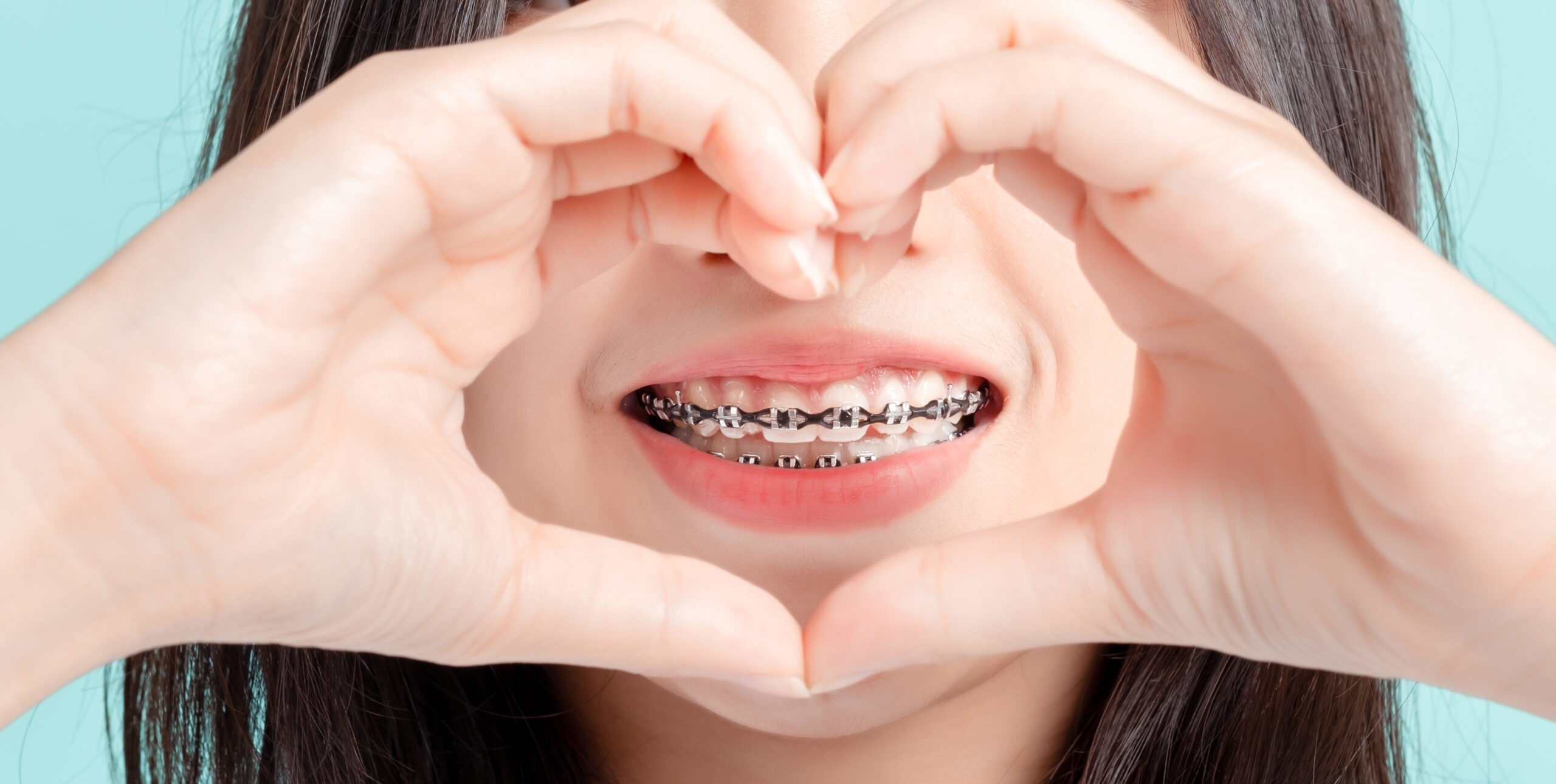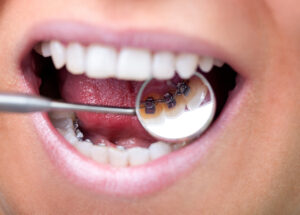Braces and Technology: How Modern Innovations Are Changing Orthodontics

Braces Technology: How Modern Innovations Are Changing Orthodontics
Braces technology has transformed the way orthodontists straighten teeth. Bulky metal brackets and painful adjustments are no longer the only options. Innovations like 3D printing, artificial intelligence, and smart materials have made treatments faster, more comfortable, and less noticeable. Patients now have more choices, with clear aligners, self-ligating braces, and even smart braces that track progress in real time. These advancements are changing orthodontics, making treatment more precise and efficient.
How Modern Innovations Are Changing Orthodontics

Orthodontics has advanced significantly over the years, making braces technology more effective and comfortable than ever. Traditional metal braces were once the only option, but new technology has introduced alternatives that improve treatment time, aesthetics, and overall experience. Modern advancements have transformed how orthodontists straighten teeth, giving patients more choices and better results.
The Evolution of Braces Technology
Braces technology have existed for centuries, evolving from crude metal bands to sleek, high-tech solutions. Early designs used bulky materials, which often led to discomfort. Over time, orthodontists refined techniques and materials, creating smaller, more efficient brackets. Today, digital imaging, innovative materials, and 3D printing have revolutionized the field, making treatment faster and more precise.
Digital Scanning and 3D Printing
One of the most significant changes in orthodontics comes from digital technology. Traditional impressions required patients to bite into messy putty, but digital scanners have eliminated that inconvenience. These devices create precise 3D images of a patient’s teeth, allowing orthodontists to design custom treatment plans.
3D printing also contributes to orthodontic advancements. Aligners, retainers, and even some brackets are now printed with extreme accuracy. This technology reduces manufacturing time and improves the fit of orthodontic appliances. Patients benefit from faster treatment and more comfortable devices.
Self-Ligating Braces: Faster and More Comfortable
Self-ligating braces have gained popularity due to their efficiency. Unlike traditional braces that use elastic bands, these braces have built-in clips to hold the wire in place. This design reduces friction and allows teeth to shift more freely.
Patients wearing self-ligating braces experience less discomfort and fewer adjustments. The reduced pressure on teeth often leads to shorter treatment times. Many orthodontists recommend this option for individuals seeking a more comfortable experience.
Clear Aligners: A Discreet Alternative
Clear aligners have become a preferred choice for many individuals who want straighter teeth without metal brackets. These transparent trays gradually shift teeth into place while remaining nearly invisible.
Unlike traditional braces, clear aligners are removable, allowing patients to eat and brush without restrictions. Advancements in braces technology have made these aligners more durable and effective. Some brands use artificial intelligence to predict tooth movement, refining treatment plans for better outcomes.
Smart Braces Technology: The Future of Orthodontics
Smart braces technology represent a major leap forward in dental technology. These braces use sensors and microchips to track tooth movement in real time. Orthodontists can monitor progress remotely, making adjustments based on data rather than in-person visits.
Some smart braces technology also use temperature-sensitive materials that react to body heat. These materials apply continuous, gentle pressure to teeth, leading to faster and more comfortable realignment. As this technology advances, it could reduce the number of office visits required during treatment.
Robotics and AI in Orthodontics
Artificial intelligence is improving orthodontic treatment by predicting the best methods for tooth movement. AI-powered software analyzes scans and suggests the most efficient treatment approach. Orthodontists can use these insights to refine strategies, leading to shorter treatment times and better results.
Robotic technology is also making an impact. Some clinics use robotic systems to bend archwires with extreme precision, reducing manual errors. These systems improve treatment accuracy and create a more personalized experience for each patient.
Heat-Activated Wires: A Game Changer
Traditional braces use metal wires that require frequent tightening. Heat-activated wires change this process by responding to body temperature. These wires become more flexible at room temperature but stiffen when exposed to heat, applying gentle pressure to move teeth consistently.
This technology reduces discomfort and makes braces more effective. Patients require fewer adjustments, leading to a smoother orthodontic experience. Heat-activated wires have become a standard feature in many modern braces.
Virtual Consultations and Remote Monitoring
Advancements in telehealth have reached orthodontics, making it easier for patients to receive care without frequent office visits. Virtual consultations allow orthodontists to assess a patient’s progress using photos or digital scans.
Some aligner brands offer remote monitoring through smartphone apps. Patients upload images of their teeth, and orthodontists provide feedback without an in-person visit. This approach saves time and increases accessibility for those who live far from a clinic.
Lingual Braces: Hidden Yet Effective
Lingual braces offer a discreet option for individuals who prefer not to show their orthodontic treatment. These braces attach to the back of the teeth, keeping them hidden from view.
Though lingual braces require a period of adjustment, advancements in their design have made them more comfortable than earlier versions. Digital imaging helps orthodontists customize each bracket to fit the patient’s teeth, improving effectiveness and reducing discomfort.
Bioengineered Brackets: The Next Big Innovation
Researchers continue to explore ways to improve braces technology, leading to the development of bioengineered brackets. These brackets use advanced materials designed to interact with the body for more efficient tooth movement.
Some bioengineered brackets contain medication-releasing properties that reduce inflammation and promote faster healing. Others are designed to adapt to tooth movement, minimizing pressure and discomfort. These innovations could revolutionize orthodontic treatment in the near future.
Choosing the Right Treatment
With so many advancements, patients now have more choices when considering braces. Factors such as comfort, appearance, and treatment duration play a role in selecting the best option. Orthodontists assess each patient’s needs and recommend the most effective approach.
For individuals who want a nearly invisible solution, clear aligners or lingual braces may be ideal. Those looking for faster results might benefit from self-ligating braces or smart technology. Digital tools and AI-driven strategies continue to refine orthodontic treatments, making them more efficient and accessible.
The Future of Orthodontics
Braces Technology continues to shape the future of braces, making orthodontic treatment faster and more comfortable. Innovations such as smart braces, heat-activated wires, and AI-driven planning improve outcomes for patients. Remote monitoring and 3D printing also play a role in enhancing the experience.
As research progresses, orthodontists will have even more tools to create personalized treatment plans. The combination of digital advancements and bioengineered materials promises a future where straighter teeth require less time and effort. Patients can look forward to a more convenient and effective orthodontic experience.




